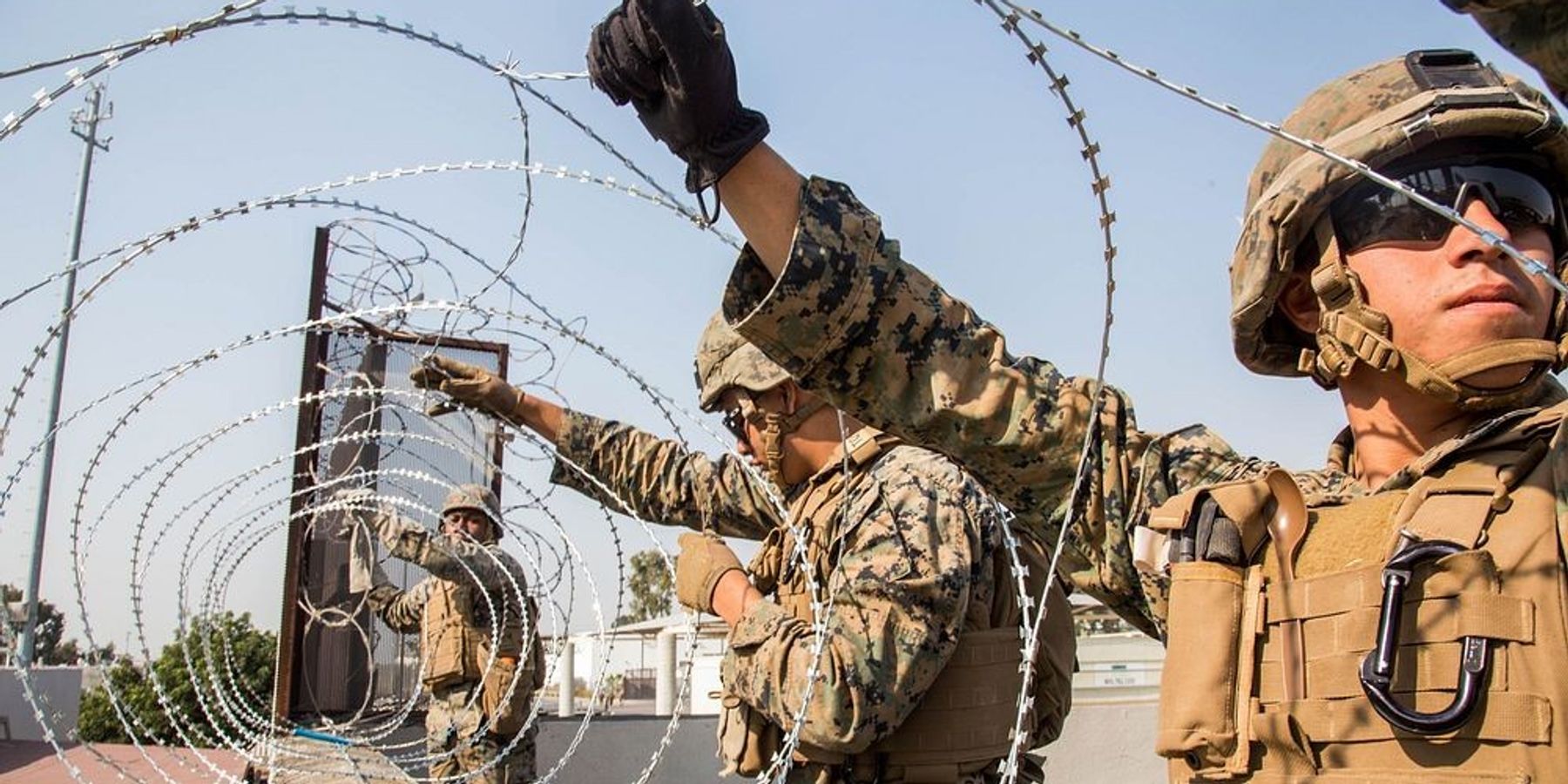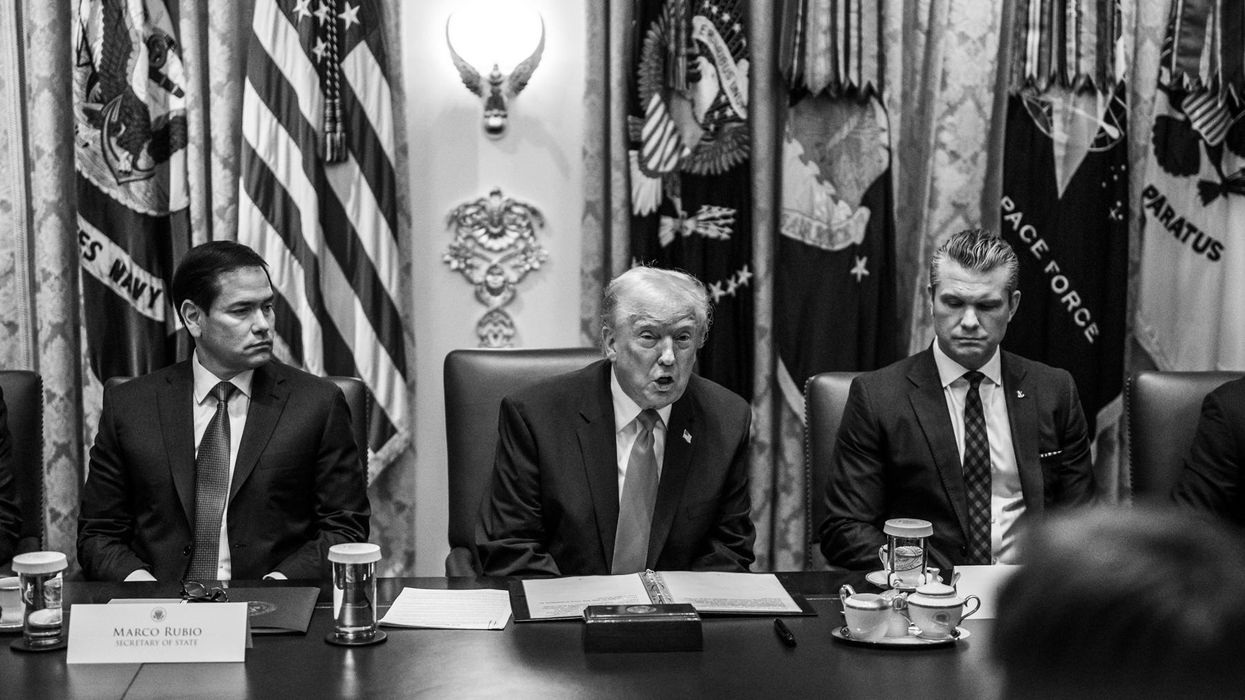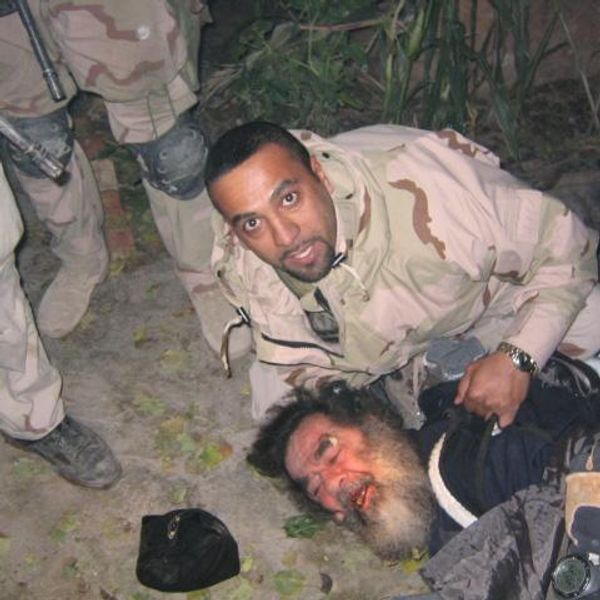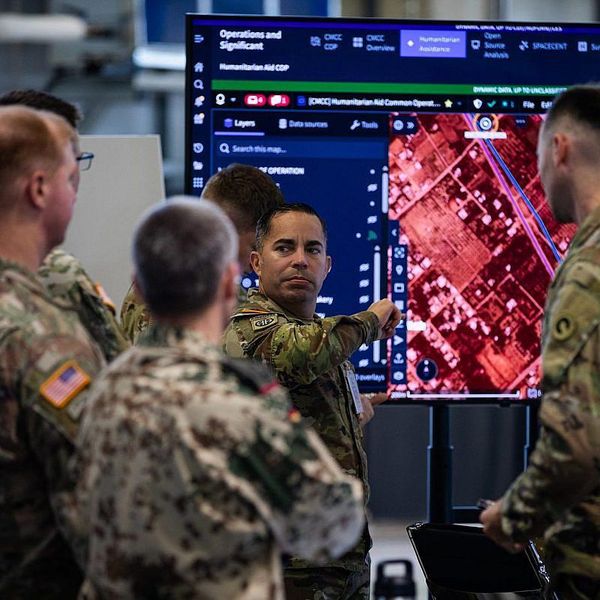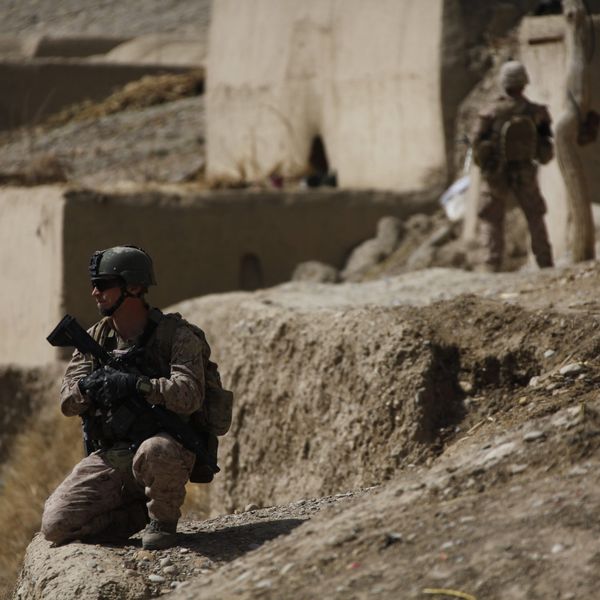“Guys and gals of my generation have spent decades in foreign countries guarding other people's borders. It's about time we secure our own,” Secretary of Defense Pete Hegseth said during his first trip to the southern border earlier this month. “This needs to be and will be a focus of this department,” he reiterated at a Pentagon town hall days later.
Most servicemembers deploying to the southern border today never fought in the post-9/11 wars, but Hegseth is right that their commanders and civilian bosses have plenty of experience to draw on from two decades spent “securing” and “stabilizing” Iraq and Afghanistan.
However, while it’s still early days, so far, the Pentagon doesn’t seem to be making use of those hard-won lessons. Instead, Department of Defense (DoD) leaders appear to be repeating the mistakes of their predecessors with open-ended missions attached to unclear objectives and more attention to appearance and signaling than results. Active-duty forces may have a role to play in President Donald Trump’s immigration agenda, but those in charge can do much more to set this mission up for success while minimizing impacts on an already overstretched military force and budget.
The use of active-duty forces on the southern border is not new to the second Trump administration. He also turned to active-duty units during his first term, sending 1,000 troops to the border in 2018 and 3,000 in 2019. President Joe Biden, too, relied on active-duty forces to support border operations throughout his presidency, though in smaller numbers. This time, however, Trump may be planning to push active-duty presence at the border to more than 7,000 personnel according to some reports.
There are two reasons why Trump might use active-duty soldiers and marines to achieve his border security campaign promises. First, the active-duty military’s size and ability to mobilize rapidly makes it an easy and appealing option, allowing for a quick win. The U.S. Customs and Border Patrol (CBP) is understaffed and recruiting more personnel will take time and money.
National guard forces are another alternative. Indeed, many national guard units are already working along the southern border. But mobilizing national guard personnel takes longer than moving active-duty forces. Second and more importantly, Trump may relish the appearance and signaling benefits that come with the use of heavily armed and elite military personnel at the U.S.-Mexico border, seeing it as a marker of U.S. strength that can deter migrants and make neighbors take U.S. warnings seriously.
Even if there are reasons to use active-duty military forces to support border security, however, the Pentagon’s approach so far is short-sighted. First, Secretary Hegseth has assigned newly deployed military forces the unrealistic goal of achieving “100% operational control” of the U.S. border. This objective — which would effectively require sealing all 2,000 miles to eliminate unauthorized entries — is not an outcome that is within reach for a few thousand military forces without supporting political legislation and legal regimes.
This is especially true if they are restricted to surveilling and monitoring checkpoints and building barriers, like today’s active-duty soldiers. As a result, new arrivals at the southern border face a daunting mission without clear benchmarks or a fixed endpoint, conditions likely to quickly drain morale.
Second, as it plans and executes its border deployments, the Pentagon has largely ignored opportunity costs, prioritizing near-term speed over sustainability and the long-term health of the force. In its rush to respond quickly, the DoD has chosen to deploy personnel from some of the most experienced and highest readiness elite units in the Army. Specifically, five hundred soldiers from the 10th Mountain Division and 1,500 from 18th Airborne Corps have already been sent to the border and the 82nd Airborne Division could be tapped as well.
These units serve special functions within the active-duty force and already have high operational tempo. The 18th Airborne Corps, for instance, is known as “America’s contingency corps” because it is kept ready to respond on short notice to crises that threaten U.S. interests around the globe. For its part, since 2002, the 10th Mountain Division has been deployed more than any other active-duty Army unit — notably two of its brigade combat teams are currently overseas or returning from deployment, one in Europe and the other in the Middle East.
Sending these units to conduct what amounts to law enforcement operations on the U.S.-Mexico border adds burdens to their already heavy load, leaves them immediately unavailable for crises overseas, and interferes with their training, reducing their preparation over the long-term.
Critics of an historically interventionist U.S. military may welcome anything that keeps Washington from sending these servicemembers to contingencies overseas. But the relatively small deployments to the border won’t force the Pentagon to cut back on foreign activities, merely slow down and complicate U.S. responses, assuming unnecessary risk in today’s unpredictable threat environment.
Finally, as it militarizes immigration enforcement at the southern border and beyond, the Trump administration has prioritized the performative over the effective at a high cost to taxpayers. Active-duty military personnel may look formidable as they man border checkpoints or conduct aerial surveillance, but it is not clear that their unique skills and competencies are needed, especially as unauthorized crossings fall sharply. If anything, they are less well-prepared for these tasks than CBP personnel.
Similarly, the use of expensive military hardware — aircraft and armored combat vehicles for instance—may intimidate unarmed migrants, but are largely unnecessary for border security operations, and could be replaced by much cheaper, civilian alternatives or even inexpensive drones and remote sensors.
The same is true of employing military aircraft for deportation flights. Using a C-17 for deportation can cost as much as five times more per migrant as a first-class ticket on a commercial jet — quite an expensive signal of resolve.
Without changes to the mission’s goals, tactics, and execution, the use of active-duty forces at the southern border may harm U.S. national security more than help. First, active-duty forces assigned to the border should have narrow and specific objectives with realistic benchmarks — numbers of unauthorized border crossings per week or miles of border surveilled and secured.
Their deployment should be time-limited and viewed as a stop-gap measure, a bridge until national guard forces can be brought in or, even better, more CBP personnel hired. Not only are national guard and CBP personnel better suited to a border security mission, but they also have additional legal authorities that allow them to contribute more directly to Trump’s immigration mission.
Second, the Pentagon should sacrifice some deployment speed to reduce the use of high-readiness units and frequent deployers relying instead on less critical units. This will increase the timeline to get the needed active-duty forces in place, but it will be worth the wait if it means protecting scarce military assets from overuse.
Finally, the Departments of Defense and Homeland Security should work together to prioritize cost-effectiveness even where this means replacing the showiest elements of the border campaign so far with cheaper alternatives and leveraging remote and autonomous technology when possible. With Elon Musk pushing to cut costs across the government, it only makes sense that wasteful spending should be on the chopping block at the border as well.
Hegseth has described his experiences in Iraq and Afghanistan as an advantage in his new job. On the southern border, he has a chance to put what he learned to use.
- With Rubio, Waltz, a harder line on Latin America looms ›
- What happens if Honduras kicks out the US military? ›
- Military seizing massive swaths of public lands at the border | Responsible Statecraft ›

